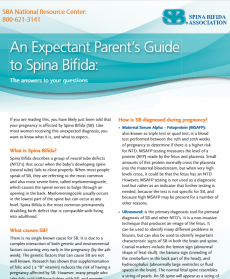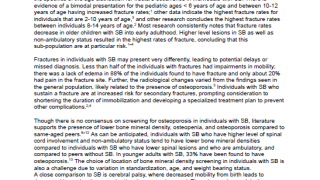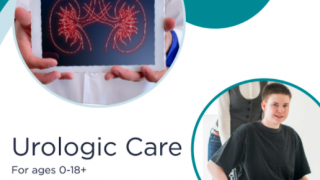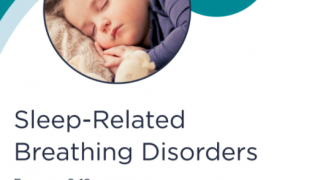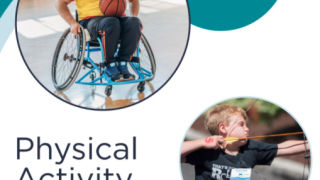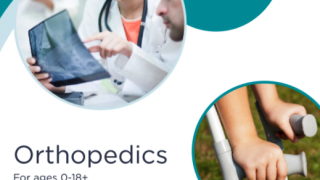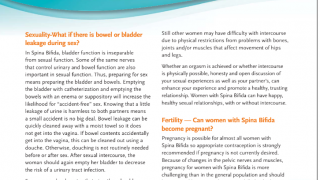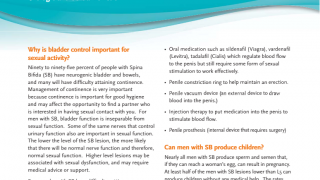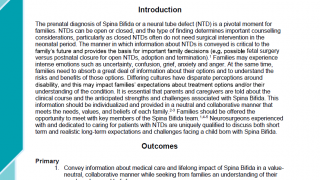This resource contains information for parents who have received a diagnosis or parents who have recently had a baby with Spina Bifida.
If you’ve just received a Spina Bifida Diagnosis, we encourage you to read our New & Expectant Parent page before you read this resource guide.
What is Spina Bifida?
Spina Bifida (SB) is a condition that affects the spine and is usually apparent at birth. It is a type of neural tube defect (NTD).
Spina Bifida can happen anywhere along the spine if the neural tube does not close all the way. When the neural tube doesn’t close all the way, the backbone that protects the spinal cord doesn’t form and close as it should. This often results in damage to the spinal cord and nerves.
Spina Bifida might cause physical and intellectual disabilities that range from mild to severe. The severity depends on:
- The size and location of the opening in the spine.
- Whether part of the spinal cord and nerves are affected.
What causes Spina Bifida?
A Spina Bifida Diagnosis might cause you to ask yourself, “how?” The truth is, no one knows for certain what causes Spina Bifida. While there is no single known cause for Spina Bifida, scientists and doctors believe that it occurs from a complex mix of genetic and environmental factors present very early in the pregnancy (by the fourth week). What’s important to know is that this is not the parents’ fault. No birth defect can be prevented, the risks can only be reduced. It’s important to know that neural tube defects like Spina Bifida are not entirely understood, and Spina Bifida is not caused by a parent’s actions.
What medical issues do people with SB encounter?
People with Spina Bifida can face a number of medical issues to deal with throughout their lives. Spina Bifida lesions need to be closed within 72 hours after birth to prevent infection and further damage to the spinal cord. If you’ve just received a Spina Bifida diagnosis, some of this information might be overwhelming. We encourage you to visit this page before you begin researching other health concerns and issues.
- Hydrocephalus is an excessive amount of spinal fluid (CSF) collecting in the ventricles of the brain. It occurs in approximately 80% of people with SB. Sometimes it occurs before birth, but most often it happens after the back has been closed. Hydrocephalus is usually treated by surgery to place a hollow tube, called a ventriculoperitoneal (VP) shunt, that transfers the fluid from the head to an empty space in the abdomen to prevent brain damage. (Please see the SBA’s info sheet on hydrocephalus and shunts for more information or visit the Hydrocephalus Association.)
- Neurogenic bowel and bladder and are caused by damage to the nerves that control the function of the bladder and the bottom section of the bowel and anus. This might sound overwhelming, but in recent years, treatments have been developed which allow individuals to achieve varying levels of functional continence. We have many relevant resources that are made to make bowel and urologic management easier.
- SB issues are dependent on the spinal level of the SB lesion. Most children can walk (though usually with the aid of orthopedic bracing and often with assistive devices such as crutches). Some are full-time walkers, but many walk short distances and choose a wheelchair for long distances. It is generally only those with thoracic or high lumbar spinal lesions who end up using the wheelchair as their only method of mobility.
- Most people with SB have normal IQ scores, they may have learning difficulties; but these can often be addressed when parents and teachers understand the issues and work together.
Every individual with SB is affected differently, and it is impossible to predict a child’s outcome before or at birth. Outcomes have improved over the 50 years due to medical advancements. Also, cultural attitudes toward individuals with disabilities have also changed, resulting in improved services. While some individuals with SB have significant disabilities, others are less severely affected. Many attain advanced education and have careers and families of their own. They become doctors, teachers, artists, athletes, and parents. Spina Bida is only one part of their lives; it does not define them.
After you find out you’re having a baby with SB, what are the next steps?
It is recommended that you meet with a pediatric neurosurgeon and/or SB clinic as soon as possible. You will also need to meet with a maternal-fetal specialist or perinatologist to closely follow your pregnancy. You may also meet other specialists who care about these to learn as much as you can. After you have gathered enough information to understand the immediate and long-term implications of SB, consider the choices available to you— prenatal or postnatal surgery, adoption, or termination —what matters is that you make an informed choice about what works best for you and your family.
Prenatal or Postnatal surgery
For pregnancies diagnosed earlier than 25 weeks gestation, in-utero fetal surgery may be an option to close the baby’s back before birth. There are potential risks and benefits of fetal surgery, and it is not appropriate for all women. For those who choose and qualify, an immediate referral must be made to a medical center where the where the operation is performed. Here are two non-affiliated resources that might be helpful for you if you are considering prenatal surgery:
- Children’s Hospital of Philadelphia Video Series
- Expecting and Considering Fetal Surgery for Spina Bifida Facebook Group
- Please note, this is a Facebook group from the SB community, and not all the opinions or views of those reflected in this group are that of SBA.
Post-natal care
Babies with SB should be delivered at a medical center that specializes in SB so they can receive specialty care during and after birth. This gives you and the specialists every chance to prepare for the best outcome. After surgery, the baby will be monitored in the neonatal intensive care unit. The average length of stay is 2 weeks, but this varies based on the child’s needs. When the baby is discharged from the hospital, he or she will have periodic follow-up appointments with a pediatric neurosurgeon, orthopedist, urologist, and possibly other specialists. Appointments will be frequent in the first year, and usually less often as time passes. Are you in the NICU or planning for the NICU? Check out our NICU Guide.
This information does not constitute medical advice for any individual. As special cases may vary from the general information presented here, SBA advises readers to consult a qualified medical or other professional on an individual basis.
Resources
I’m interested in resources related to:
Tags
